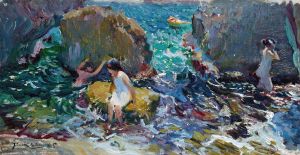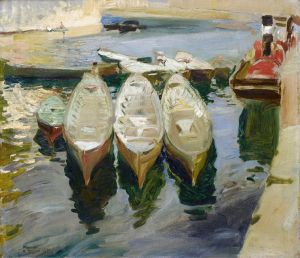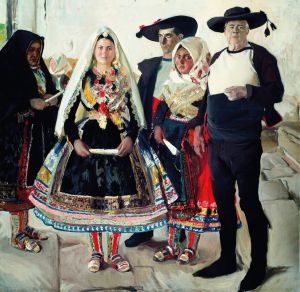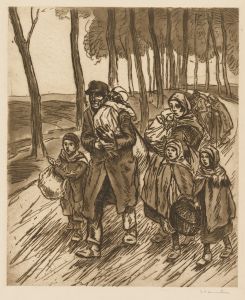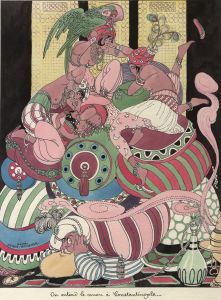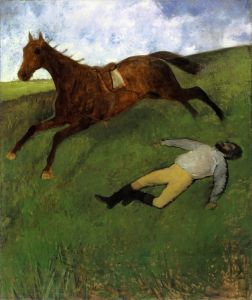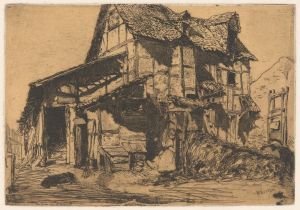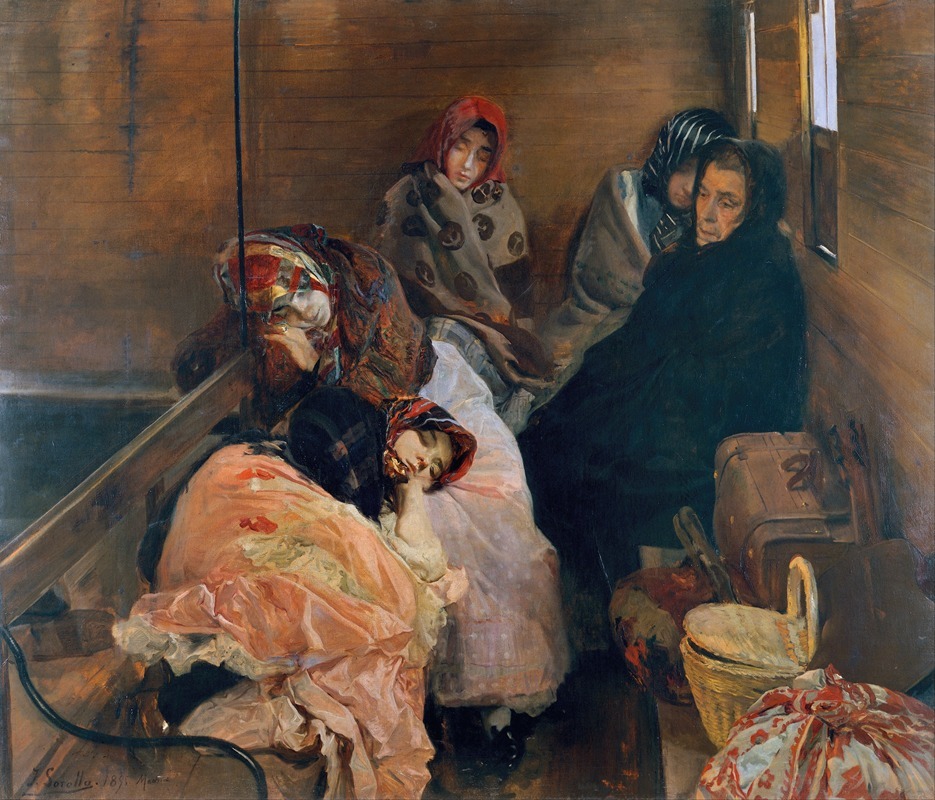
White Slave Trade
A hand-painted replica of Joaquín Sorolla’s masterpiece White Slave Trade, meticulously crafted by professional artists to capture the true essence of the original. Each piece is created with museum-quality canvas and rare mineral pigments, carefully painted by experienced artists with delicate brushstrokes and rich, layered colors to perfectly recreate the texture of the original artwork. Unlike machine-printed reproductions, this hand-painted version brings the painting to life, infused with the artist’s emotions and skill in every stroke. Whether for personal collection or home decoration, it instantly elevates the artistic atmosphere of any space.
"White Slave Trade" is a painting created by the renowned Spanish artist Joaquín Sorolla in 1894. Sorolla, known for his luminous and vibrant works, often depicted scenes of everyday life, landscapes, and social issues with a keen eye for detail and a masterful use of light.
This particular painting, "White Slave Trade," addresses the grim and harrowing subject of human trafficking, specifically focusing on the exploitation and forced prostitution of women. The artwork is a stark departure from Sorolla's more commonly celebrated sunlit beach scenes and portraits, showcasing his versatility and willingness to engage with darker, more serious themes.
In "White Slave Trade," Sorolla employs a somber palette and dramatic contrasts of light and shadow to convey the gravity of the subject matter. The composition is carefully constructed to draw the viewer's attention to the central figures, who are depicted with a poignant realism that underscores their plight. The painting captures a moment of despair and helplessness, reflecting the artist's empathy and concern for the victims of such inhumane practices.
Sorolla's decision to tackle this subject matter was likely influenced by the broader social and political context of the late 19th century, a period marked by increasing awareness and condemnation of human trafficking and exploitation. His work can be seen as part of a larger movement among artists and intellectuals of the time who sought to shed light on social injustices and advocate for reform.
The painting was exhibited at the Paris Salon in 1895, where it garnered significant attention and critical acclaim. It is now housed in the Museo Sorolla in Madrid, Spain, where it continues to be an important part of the museum's collection, offering insight into Sorolla's range as an artist and his engagement with pressing social issues of his time.
"White Slave Trade" stands as a powerful testament to Sorolla's ability to capture the human condition in all its complexity, using his artistic talents to raise awareness and provoke thought about the darker aspects of society. The painting remains a poignant reminder of the ongoing struggle against human trafficking and the importance of art in highlighting and addressing social issues.






